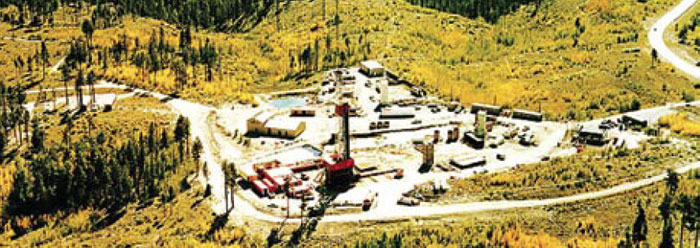In 2002, Professor Michel Brunet of the University of Poitiers, France, described a tiny fossil ape skull nicknamed Toumaï as an upright-walking human ancestor.1 This ancient skull and other possibly associated partial bones from Chad belong to the Sahelanthropus kind. Though Brunet enjoyed fame for finally finding a missing link in human evolution, some of his colleagues were and remain convinced that the Toumaï individual walked on four limbs like regular apes after all.
One might expect science to have progressed over the last few decades. New evidence should have clarified issues, and experts should have objectively followed that evidence toward a data-driven consensus. Instead, new analyses of the old limb bones have merely rekindled the same disagreement—a debate that signals something is wrong with this kind of science.2
The story seemed perfect for human evolution. Just when pre-humans began to diverge from pre-chimpanzees at seven million supposed years ago, the very chimp-like Sahalanthropus evolved the ability to walk on two legs—a bipedal ape. Surely this Toumaï specimen captured the moment our ancestors took their first steps toward becoming human. Unfortunately for this tale, Brunet’s colleagues took the opposite position just a few months after his 2002 report.3
These skeptics pointed to places on the Toumaï skull where muscles attached it to the neck. Those muscles pin to the bottom of human skulls to hold our heads up, but they attach toward the back of ape skulls to hold their heads forward as they walk on all fours. The team interpreted this fossil as a female gorilla with a thick eyebrow ridge.
Did Toumaï walk like a man or like an ape? Why can’t experts agree on an answer after 20 years?
A 2020 analysis concluded that the associated femur most likely belonged to a quadruped—a four-legged walker.4 That would match the diagnosis of Sahelanthropus as an extinct ape.
Not to be outdone, the group that still wants Sahelanthropus to have walked on two legs recently published an article saying so.5 They pointed to a femur feature called a calcar femorale and to a certain twist in the bone as evidence for upright walking. But it turns out that neither feature is diagnostic for walking. The calcar femorale, a ridge structure, doesn’t help answer the question since it occurs in orangutans (quadrupeds). People are bipeds, but only some of us have a calcar femorale.6 And the same burial pressures that warped the bone could be responsible for its unique twist.
Bernard Wood, a palaeoanthropologist at George Washington University in Washington DC, co-authored the 2020 study that concluded that the leg belonged to an ape. What does he think about the 2022 article that doubled down on the two-legged stance? He told Nature news, “They cherry-pick what they think is information which is consistent with the femur shaft being a biped, and they studiously ignore information to the contrary.”6
What does this, and so many similar squabbles between scientists reveal? Perhaps paleoanthropology contains more speculation than fact. Back in 1990, James Shreeve told Discover magazine, “Everybody knows fossils are fickle; bones will sing any song you want to hear.”7 It looks like that same subjectivity prevails. Meanwhile, the possibility that Sahelanthropus was a variation within the created gorilla kind fits both the Bible and its bones.
References
1. Brunet, M. et al. 2002. A new hominid from the Upper Miocene of Chad, Central Africa. Nature. 418 (6894): 145-151.
2. MkKie, R. and K. Willsher. Oldest human or just another ape? Row erupts over 7m-year-old fossil. The Guardian. Posted on theguardian.com September 3, 2022, accessed September 12, 2022.
3. As cited in Brunet, Michel. 2002. Sahelanthropus or 'Sahelpithecus'? Nature. 419 (6907): 582.
4. Macchiarelli, R., et al. 2020. Nature and relationships of Sahelanthropus tchadensis. Journal of Human Evolution. 149: 102898.
5. Cazenave, M., et al. 2022. Calcar femorale variation in extant and fossil hominids: Implications for identifying bipedal locomotion in fossil hominins. Journal of Human Evolution. 167: 103183.
6. Callaway, E. Seven-million-year-old femur suggests ancient human relative walked upright. Nature. Posted on nature.com August 24, 2022, accessed September 12, 2022.
7. Shreeve, J. 1990. Argument over a woman. Discover. 11 (5): 58.
Stage image: Sahelanthropus skull
*Dr. Brian Thomas is Research Scientist at the Institute for Creation Research and earned his Ph.D. in paleobiochemistry from the University of Liverpool.
Scientific Debates Reveal Hidden Story Beneath Ape Fossil
The Latest
The Lord Jesus: The Gift of Christmas
“Therefore God also has highly exalted Him and given Him the name which is above every name, that at the name of Jesus every knee should bow,...
Garments for the King
“All thy garments smell of myrrh, and aloes, and cassia, out of the ivory palaces, whereby they have made thee glad.” (Psalm 45:8)
One...
Bold Claim, Hidden Design: What Salterella Reveals About Early...
What if a fossil no bigger than a grain of rice showed engineering so precise that it still puzzles scientists? That is the intrigue surrounding Salterella,...
CREATION PODCAST
Black Holes are BREAKING the Big Bang! | The Creation Podcast:...
Space is full of some of the strangest and most breath-taking objects in existence. Among them, black holes sit right at the top of the list. They're...
Where Did Most of Earth's Species Come From?
Evolutionary naturalism is locked into seeing the entire living world as having evolved from a single common ancestor many millions of years ago.1...
A Molecular Snowmobile
People following—or actively involved in—creation science are no doubt aware of the incredible molecular motor called the flagellum,1,2...
Rhino Fossil Requires the "Impossible" from Conventional...
A recent study published in Nature Ecology & Evolution claims that the “impossible” actually happened—not just once, but three...
December 2025 ICR Wallpaper
"Come now, and let us reason together," Says the LORD, "Though your sins are like scarlet, They shall be as white as snow; Though they...
The Bipedal Two-Step of Human Evolution
The supposed evolution of bipedalism continues to be a major obstacle in the narrative that humans evolved from apelike ancestors.1,2
For...
CREATION PODCAST
The James Webb Space Telescope vs The Big Bang | The Creation...
When you look into the night sky, you’re seeing light that has traveled incredible distances to reach you. For centuries, astronomers have used telescopes...

















